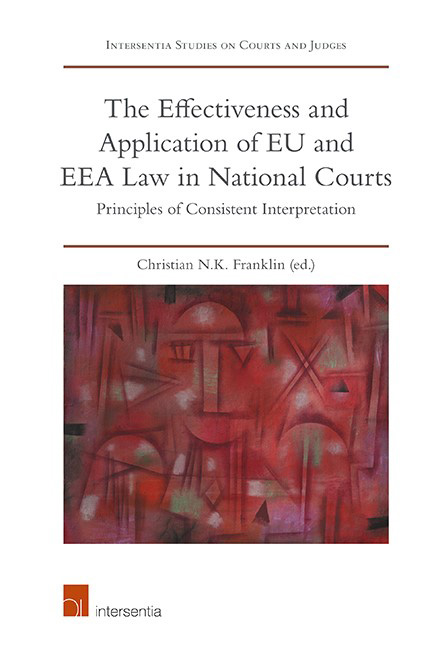 The Effectiveness and Application of EU and EEA Law in National Courts
The Effectiveness and Application of EU and EEA Law in National Courts Italy
Published online by Cambridge University Press: 31 January 2019
Summary
INTRODUCTION
A very popular topic in Italian academic literature in recent years is that concerning the influences and effects in the domestic legal system of EU law and the decisions of the Court of Justice of the European Union (ECJ) on the one hand, and of the European Convention on Human Rights (ECHR) and the decisions of the European Court of Human Rights (ECtHR) on the other. The subject of analysis and reflection has especially focused on the dense intertwining among the Charters that ensure human rights at various levels – the Italian Constitution, the EU Charter of Fundamental Rights and the ECHR; and even other international conventions establishing specific bills of rights, such as the New York Convention on the Rights of the Child – as well as the external and internal courts that are called on to apply these Charters in various ways.
For legal practitioners, the issues raised by the overlapping of national, European and international legal sources and judicial decisions have now become very urgent. Some authors refer to them as a “ labyrinth “ for the interpreter, who is frequently asked to choose among several possible directions, and is oft en not equipped with adequate tools to navigate between them. In this situation, the temptation may be, of course, to avoid obstacles, to take unorthodox shortcuts, to skip the necessary logical and argumentative passages, and to rely on vague principles and values in order to achieve a solution in the case at hand.
However, it should be stressed that in the Italian legal system, the Constitutional Court (ItCC) has created a “ map “, setting out “ the logical path for the decision of national proceedings involving fundamental rights “ guaranteed by international and supranational sources. In fact, the interpretation and the application of the constitutional norms that function as a connection between the “ inside “ and the “ outside “ of the legal system are up to the ItCC to determine. Therefore, over the years, the ItCC has created the “instructions for use” of supranational and international norms, and indicated the logical path to follow in each case.
- Type
- Chapter
- Information
- The Effectiveness and Application of EU and EEA Law in National CourtsPrinciples of Consistent Interpretation, pp. 177 - 212Publisher: IntersentiaPrint publication year: 2018
